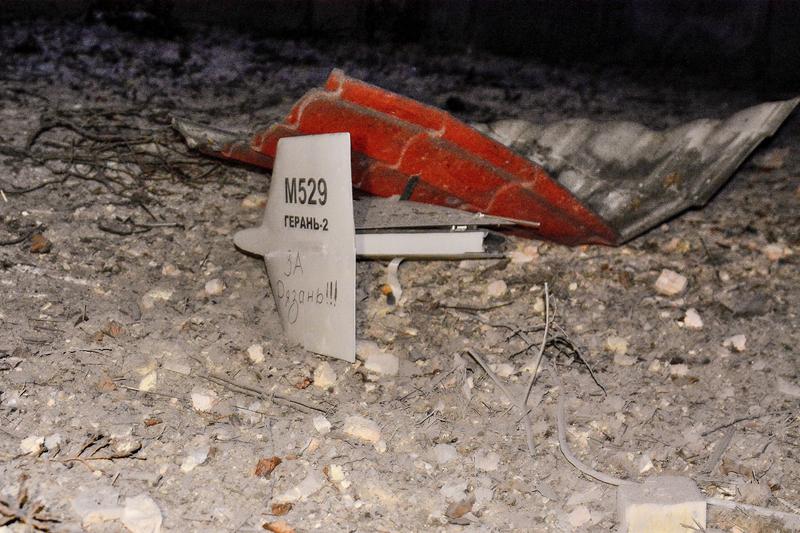Berlin/Moscow.
Russia is stationing tactical nuclear weapons in neighboring Belarus. What does this new level of escalation in the Ukraine war mean?
Vladimir Putin does what he always does: he threatens to use his nuclear weapons. On Russian television he announced the deployment of tactical nuclear missiles in neighboring Belarus, which has long been part of Putin’s strategic sphere of influence. The explosive thing: Belarus borders on Ukraine – but it also borders on the NATO states of Poland and Lithuania. What does this new level of escalation in Russia’s war against Ukraine mean? All important questions and answers.
What exactly did President Putin announce?
Iskander missiles that can be equipped with tactical nuclear warheads are to be stationed in Belarus. Training starts in Belarus on April 3. The bunker depots for the Iskander missiles, which can be equipped with nuclear warheads, are to be completed on July 1st. As so often, Putin announced it on state television. Everyone should get it and spread it.
Belarus has served as a deployment area for Russian troops since the beginning of the war. In fact, immediately after the start of the Russian attack in February 2022, the regime in Belarus around dictator Lukashenko paved the way for the stationing of Russian nuclear missiles in a state-manipulated referendum. Putin’s current move was expected. However, approval of Putin’s “special operation” is not very high among the Belarusian population. And in the country, resistance to Belarus as a deployment area for Russian troops is growing.
Also read:Dangerous game – this is how Putin turns the nuclear spiral
Nuclear-equipped Iskander missiles are so-called tactical nuclear weapons. In other words, weapons with a shorter range and less explosive power than strategic nuclear weapons, which can reach a range of almost 6,000 kilometers with ICBMs. Iskander missiles are among the most advanced short-range Russian missiles and can be launched within 40 seconds. Their maximum speed is around seven times the speed of sound. The range of these missiles is given as several hundred kilometers. They could theoretically reach the Baltic capitals and also Warsaw. Berlin would be too far away.
How serious is the threat to the West?
First and foremost, it is a show of power by Russia – and less a direct threat of attack on the West and NATO. It is unlikely that Russia will also use these weapons. So far, Putin has always denied any possible first use of nuclear weapons. “The announcement of the deployment of tactical nuclear weapons in Belarus is irrelevant to the risk of escalation to nuclear war, which remains extremely low,” writes the US Institute for War Studies (ISW) in an analysis. Contrary to what the threatening gestures suggest, Putin is a “risk-averse actor”, according to the experts. In any case, Russia can already reach any point on earth with its nuclear weapons.
The CDU foreign politician Norbert Röttgen also reacts calmly. The stationing of the nuclear missiles in Belarus “does not represent an additional threat to Europe, but is a further attempt at intimidation, not least aimed at the German population”. The nuclear weapons that also threaten Germany have been stationed in Kaliningrad for a long time by Putin.
Also read: Is Putin Deploying “Nuclear Ships”? That’s behind it
The chairman of the Europe Committee in the Bundestag, Anton Hofreiter (Greens), told our editors: “Nuclear threats have been part of the Kremlin’s repertoire since the beginning of the Russian war of aggression.” However, there is still no evidence that Russia is actually planning to use its nuclear weapons. “The goal of the threats is to undermine Western support for Ukraine,” Hofreiter said. “Our task is to issue further sanctions at European level and to continue to support Ukraine.” Russia expert Nico Lange concludes that the announcement of the deployment shows above all how Putin “parallel to his attack on Ukraine forced the incorporation of Belarus”.
The campaign to abolish nuclear weapons (ICAN) reacted less calmly. According to a statement by the organization, which received the Nobel Peace Prize in 2017, Putin’s plan is an “extremely dangerous escalation”. Political misjudgments or military maneuvers could quickly lead to risks that are difficult to calculate.
Does the announcement mean that Putin has his back against the wall?
But on the contrary. Following Xi Jinping’s state visit to Moscow last week, Putin is acting from a position of strength. Gas and oil are to be exported to China, from where more consumer goods are to come to Russia. This would possibly mean that the sanctions imposed by the West would fizzle out. Russia also wants to cooperate with China in “military-technical” terms. Nothing is known about official arms deliveries. Russia also wants to ramp up its arms production. “The total number of tanks in the Russian army will exceed Ukrainian’s by three times, even more than three times,” Putin announced. His country wants to build and modernize 1,600 new tanks.
Also read:Why Putin is repealing the last major anti-nuclear pact
At the same time, the Russian army has not recorded any significant gains in territory in Ukraine. The war froze in a trench warfare, the announced Russian spring offensive remained without a decisive victory. At the same time, the damage in Ukraine and in the Russian military is enormous. Some experts see the threat of nuclear weapons to the West as an attempt to distract attention from the losses in Ukraine.
Aren’t the uranium shells that Great Britain wants to deliver to Ukraine also nuclear weapons?
No, the core of these shells is depleted uranium, which contains too little radioactivity for a nuclear explosion. Depleted uranium is a waste product from the manufacture of nuclear fuel rods. Uranium is a very heavy metal, so the depleted uranium projectiles have a special penetrating power, for example to destroy tanks. The British Army says it has been using depleted uranium in its armor-piercing shells for decades. The Ministry of Defense in London accused Putin of misinformation after he spoke of a “nuclear component” and announced a counter-reaction. Putin knows that this has nothing to do with nuclear weapons or capabilities, it said.
|
Name |
Wladimir Wladimirowitsch Putin |
|
birth date |
7. October 1952 |
|
Place of birth |
Sankt Petersburg |
|
Star sign |
Scale |
|
Amt |
President of the Russian Federation |
|
In office since |
2000 (break from 2008 to 2012) |
|
Marital status |
Divorced, at least two children |
|
Size |
ca. 1,70 Meter |
In the two Iraq wars of 1991 and 2003, US and British troops fired around 400,000 kilograms of uranium ammunition. With serious consequences: According to experts, radiation exposure in Basra, Iraq, is now 20 times the normal value. The number of cancer cases is increasing, especially among children. Many newborns are born with deformities.
More articles from this category can be found here: Politics



